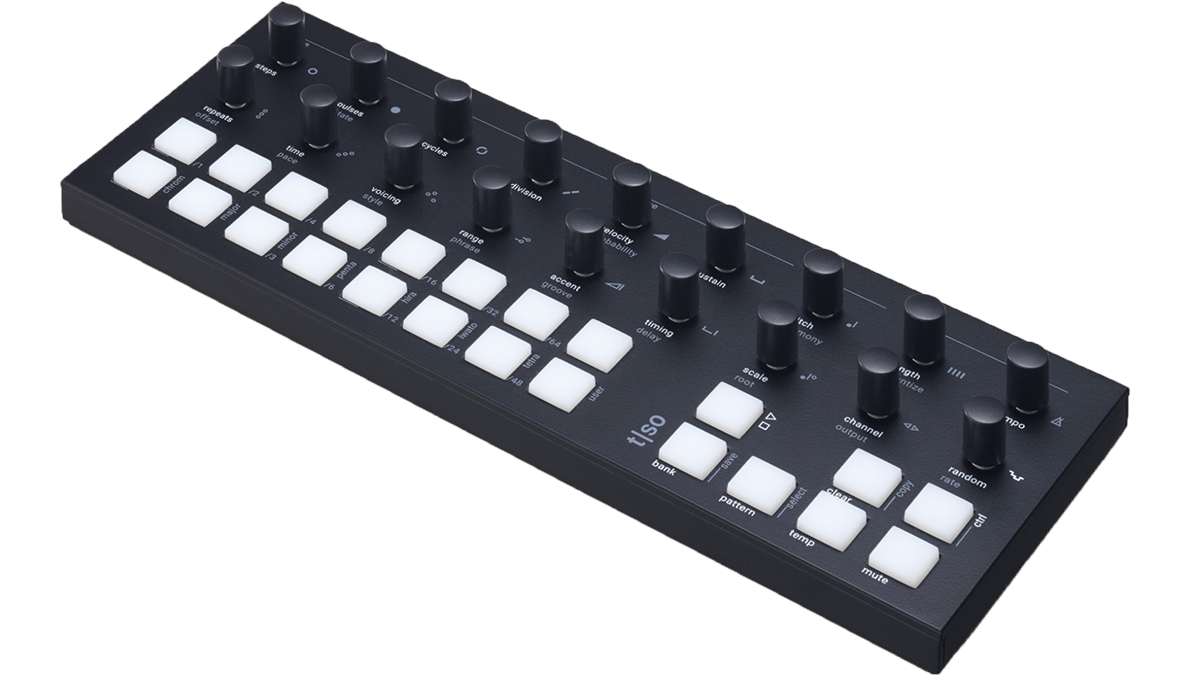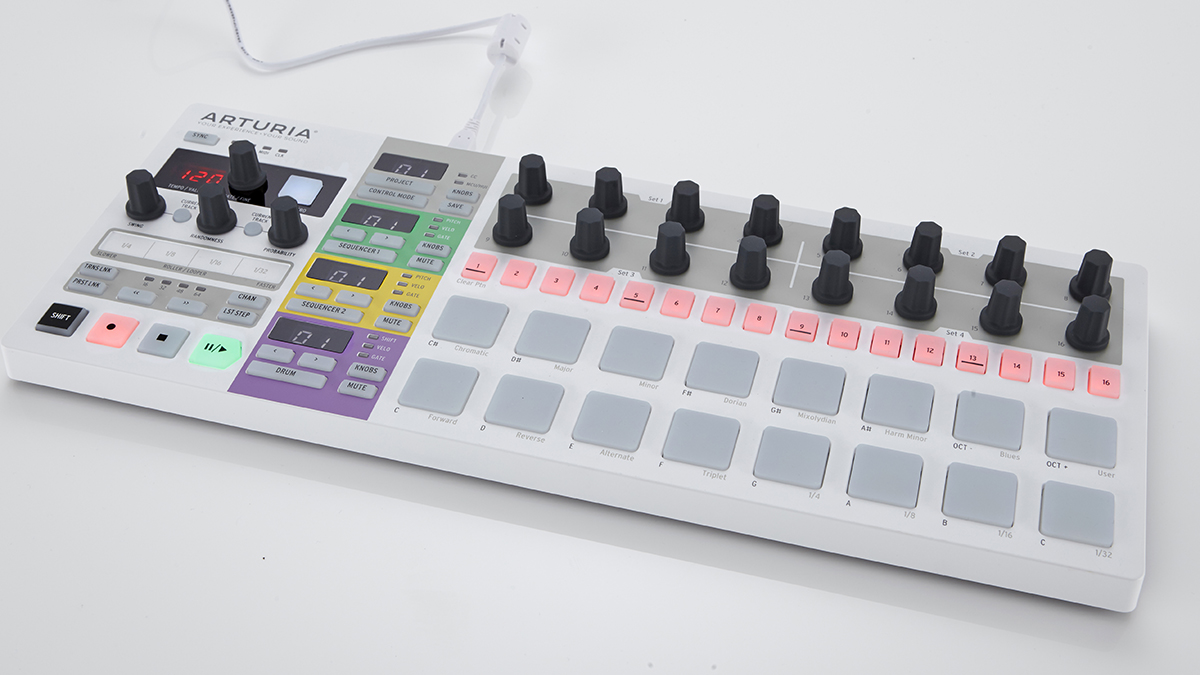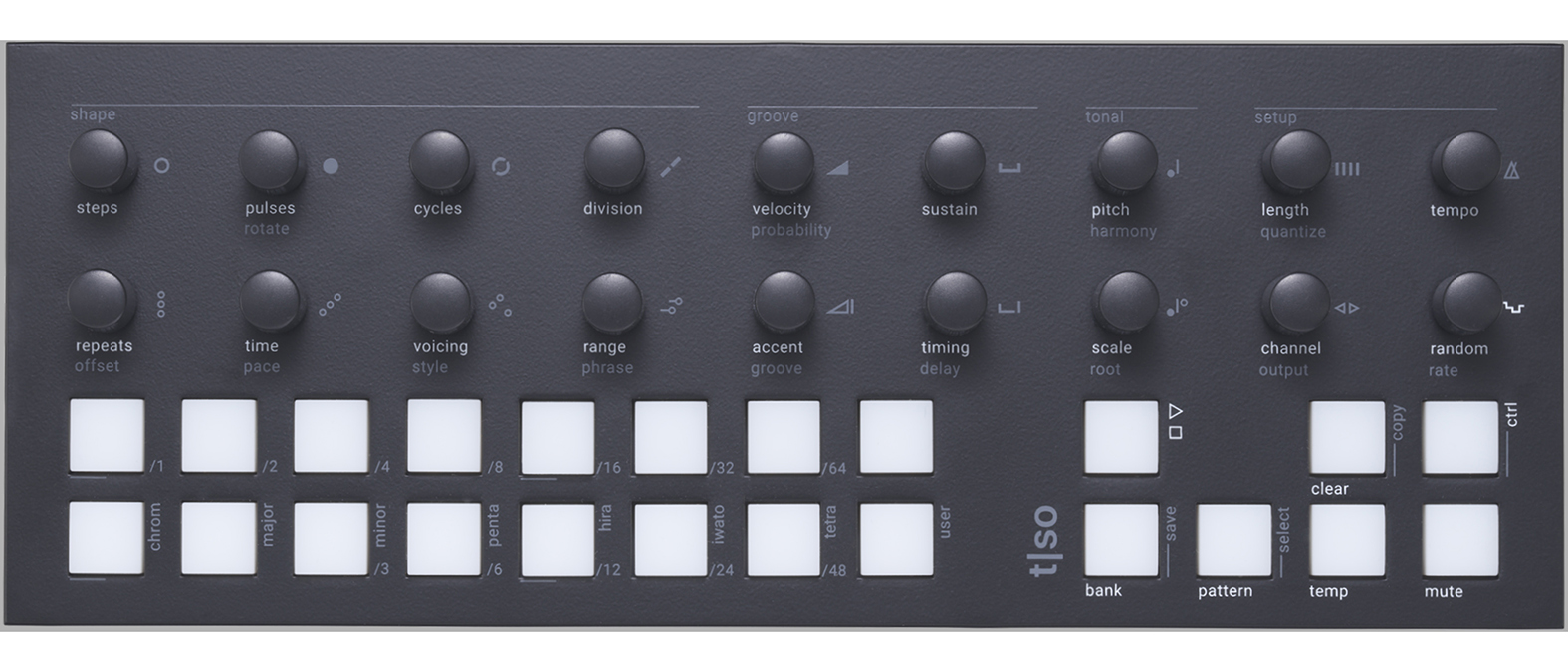MusicRadar Verdict
The T-1’s Euclidean rhythms make it a powerful sequencing machine, but we’d like some MIDI controller functionality too.
Pros
- +
Euclidean algorithm for more sequencing options
- +
Sturdy aluminium housing for live use
- +
Intuitive design, great hands-on feel
- +
Connectivity for MIDI, CV, computer
- +
Wireless Ableton Link synchronisation
Cons
- -
Sequencer-only, no MIDI control options
- -
The price will deter some folk
MusicRadar's got your back
Torso Electronics T-1 Algorithmic Sequencer: What is it?
The Torso Electronics T-1 is a new sequencer that takes its place alongside the Arturia Beatstep Pro, the Korg SQ-64, and others, proving beyond doubt: hardware sequencing is back!
It features 16 banks, each containing 16 patterns, and each pattern has 16 polyphonic tracks, fair enough, but what makes it unique is the inclusion of Euclidean rhythms, which involve notes or other events automatically being distributed along a sequence’s steps.
The box contains the T-1, a MIDI adapter, and a USB-C cable; go online for a manual, firmware updates, and the T-1 Config software. Being made out of aluminium, the T-1 is pleasantly chunky, at 850g, and features 23 backlit pads, 18 knobs, and at the back, 11 mini jacks relating to CV/gate/sync, three for MIDI (in/out/thru), and a USB-C port.
Use the USB cable to connect to your computer, and open your DAW (we’re using Ableton Live 11). We direct MIDI tracks from the T-1 to separate MIDI inputs in Live – targeting instruments and drum racks on different channels. Sequencing commences by using the T-1’s knobs in conjunction with the pads – or ‘value buttons’ as they’re known here.
Set a number of steps, add some pulses (events, typically notes), and use the other controls to introduce a desired level of randomisation to the proceedings.
Sequencing functions include note divisions, chords, scales, and a rather cool temp button (not to be confused with the Tempo knob) – press and hold this, while moving knobs to make temporary parameter changes, which are then undone once you release the button – very neat for live performance, where you can go off on one, jumping back to your defaults at any time.

Torso Electronics T-1 Algorithmic Sequencer: Performance and verdict
The T-1 functions as a typical hardware sequencer at one level – using pads and knobs to sequence parameters like note length, velocity, accents, repeats, and so on.
Want all the hottest music and gear news, reviews, deals, features and more, direct to your inbox? Sign up here.
It has 16 polyphonic tracks per pattern, and each is set to a different length. This is good so far, but the stand-out feature for the T-1 is the use of Euclidean rhythms.
An Euclidean rhythm is different from say, a normal 4/4 kick drum pattern. The starting point is similar, a cycle that occurs over a certain number of steps. But what happens with Euclidean rhythms is that any number of notes are spread as evenly as possible across that number of steps, be they odd or even numbers.
By altering the number of notes and steps, and position of the cycle, virtually any type of rhythm can be created.

• Arturia Beatstep Pro
Includes two independent melodic sequencers and a drum sequencer, randomisation, and a MIDI controller mode.
• Korg SQ-64
Three melody tracks, a drum track, and connections for MIDI, USB, Sync, and includes an arpeggiator.
It’s the Euclidean rhythms that make the T-1 unique – those buzzword-y critters are running all the time. The Steps knob and buttons set the length of the cycle, then the Pulses knob enters notes along the steps – press and hold the knob as you turn it to see the pulses appear.
This is an ideal visualisation of how Euclidean rhythms work – the pulses light up orange and reposition themselves as you turn the knob.
There’s also the Rotate control, which offsets the start position of the cycle. Sequencing isn’t just about notes, however; any parameter can be sequenced, and up to 16 Euclidean cycles can be chained and will play one after the other, provide even more development over time.
In the real world, the Euclidean concept needn’t bother you too much – it’s an effective way to get new and evolving patterns from your hardware and software, that’s what matters.
We then connected the T-1 to the Polyend Tracker and used the T-1 to trigger samples within the Tracker, wherein the Tracker simultaneously plays back other sequenced material. If other items in your setup support it, the T-1 features Ableton Link over WiFi.
The T-1 is a highly creative instrument, and there were several occasions when we’d quickly hit record in Ableton Live to capture parts for later use. It is very adaptable, working great with software, syncing via Ableton Link, and music hardware via MIDI or CV – it’ll be welcome in pretty much any rig.
MusicRadar verdict: The T-1’s Euclidean rhythms make it a powerful sequencing machine, but we’d like some MIDI controller functionality too.
Torso Electronics T-1 Algorithmic Sequencer: Hands-on demos
Torso Electronics
Loopop
SequencerTalk
Torso Electronics T-1 Algorithmic Sequencer: Specifications
- Sequencer: Euclidean rhythm generator (w. step editing); Advanced note repeater / arpeggiator; Melody generator; 7 musical scales + 1 user scale per track; Harmonic pitch control; Random modulation on every parameter
- Tracks: 16 tracks per pattern; 16 MIDI channels; Polyphony on every track
- Patterns and banks: 16 patterns per bank; 16 banks
- User Interface: 18 endless rotary encoders; 23 multicolour keypad buttons
- Connectivity: USB C (midi/power); MIDI in / out / thru (TRS type A, 3.5mm); CV & gate I/O; Ableton Link (WiFi)
- Physical: Matte black aluminium casing; Dimensions: L:304, W:114, H:39mm (11.9”, 4.5”, 1.5″) (including knobs and rubber feet); Weight: 815g (1.8 lbs)
- Included in the box: 1 x T-1; 1 x USB cable; 1 x MIDI adapter (type A)
- CONTACT: Torso Electronics

Computer Music magazine is the world’s best selling publication dedicated solely to making great music with your Mac or PC computer. Each issue it brings its lucky readers the best in cutting-edge tutorials, need-to-know, expert software reviews and even all the tools you actually need to make great music today, courtesy of our legendary CM Plugin Suite.

